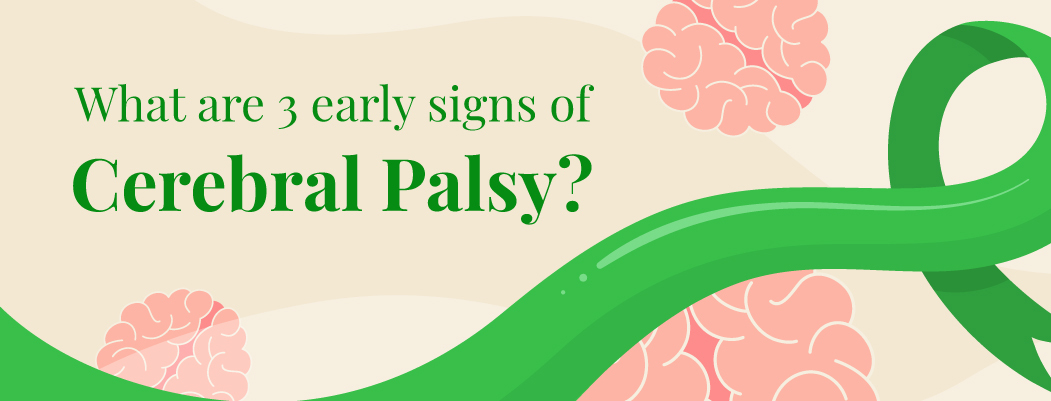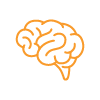Cerebral palsy
December 6, 2022

The most prevalent physical disability in children, cerebral palsy, is brought on by damage to the developing brain before or during birth. Neurological and musculoskeletal issues can influence posture, sensory perceptions, communication, mobility, and other functions in people with cerebral palsy.
“Cerebral” refers to something having to do with the brain. Palsy refers to weakness or issues with movement in the body.
Brain Palsy: What You Should Know
- Cerebral palsy can be brought on by brain injuries that occur before, during, or after birth.
- Infants and toddlers are typically the first to show cerebral palsy symptoms.
- Nearly 50% of kids with cerebral palsy experience spasticity or hypertonia (excessive muscle tension) with increased tendon reflexes).
- Cerebral palsy does not yet have a known cause or treatment, but there are orthopaedic, neurological, and medical disorders that can be treated.
Cerebral palsy: what is its cause?
The parts of the brain that regulate motor function can be damaged by several different types of traumas, including:
- Preterm birth is the leading contributor to infant mortality
- Including shaken baby syndrome, head injuries
- brain or spinal cord infections
- Events that impede blood flow to the brain, such as strokes, that prevent oxygen from reaching the brain, as in near-drowning situations
- Malnutrition
- Ingesting heavy metals
Symptoms of cerebral palsy
From mild to severe, cerebral palsy symptoms might vary from person to person. For example, some cerebral palsy people could find it challenging to sit and walk. Other people living with cerebral palsy may struggle to hold objects.
As a kid matures and acquires motor abilities, the condition’s consequences may become more or less evident or restrictive. Additionally, they differ according to the region of the brain that was impacted.
Among the more widespread signs are:
- Trouble walking
- Delays in mastering motor skills such as rolling over, sitting up by themselves, or crawling differences in muscle tone such as being too floppy or too stiff spasticity
- Stiff muscles
- Hyperactive reflexes
- Poor motor coordination
- Tremors or uncontrollable movements, excessive drooling, and swallowing issues
- Preference for one side of the body, such as reaching with one hand neurological conditions such seizures, intellectual disability
- Blindness
What kind of cerebral palsy are there?
There are two methods to categorise cerebral palsy: by the bodily areas that are most affected and by the most noticeable movement disorder.
Cerebral palsy movement abnormalities come in four different varieties. They are the outcome of injury to various brain regions.
There are various forms of cerebral palsy, including:
Spastic cerebral palsy: About 75% of CP patients have this condition. Muscles in people with spastic CP are rigid, tight, and involuntarily contract. Due to muscle spasticity, their motions, including walking and talking, may seem jerky (stiffness).
Dyskinetic cerebral palsy, called athetoid cerebral palsy, is a form of CP resulting in jerky facial movements, tongue, and limbs. The signs could be fluid and leisurely or irregular and rapid. The person may appear to be twisting or writhing. When the person is moving around, the movements are more pronounced. Drooling is common in people with dyskinetic CP because they frequently have problems swallowing their saliva.
Ataxic cerebral palsy: This CP affects balance, coordination, and depth perception. They can struggle to stand still or walk without stumbling or falling. Children with this kind of CP frequently walk with their feet apart. When they move, they appear to be trembling.
Mixed types: Multiple symptoms may co-occur when there is damage to more than one part of the brain. Spastic, dyskinetic, and ataxic cerebral palsy symptoms can all be present in a person with mixed cerebral palsy.
How is cerebral palsy diagnosed?
Your child’s muscle tone, motor skills, coordination, and movement will be examined by a doctor to determine whether your child has cerebral palsy. In addition, your doctor will enquire about your baby’s development and birth history. You should let the doctors know of the development of your child and has experienced any delays.
Your doctor may request imaging studies to see your child’s brain clearly clearly. The location and extent of brain injury are visible in computed tomography (CT) and magnetic resonance imaging (MRI) studies. These pictures help the doctor diagnose your child correctly and suggest the best treatments. However, cerebral palsy can be diagnosed without an imaging scan, so your doctor may advise waiting till they are older.
Can cerebral palsy be prevented?
Cerebral palsy cannot be prevented, although it is feasible to lower the chance of having a child with the condition. Be sure to receive quality prenatal care if you’re expecting or planning a family. Your doctor will keep an eye on you and your child’s health and handle any problems as they come up.
Visit your doctor frequently to have your infant checked. Keep up with vaccinations to shield your child from diseases that might cause cerebral palsy.
Diagnose and Screening
The health of kids and their families depend on getting a Cerebral Palsy diagnosis early. Unfortunately, it may take multiple measures to diagnose Cerebral Palsy:
Monitoring of Development
Monitoring a child’s developmental progress, also known as surveillance, is keeping track of that child’s development. A developmental screening test should be administered as soon as feasible if child development issues are discovered while the youngster is being monitored.
Screening for Development
A quick test is administered during developmental screening to see whether the kid has any particular developmental delays, such as mobility or motor delays. The doctor will recommend you for developmental and medical examinations if the screening test findings are worrying.
A thorough medical history, a physical examination that includes a thorough neurological examination, and an assessment of the symptoms are all steps a doctor will take to diagnose cerebral palsy.
Diagnosis
Additional evaluations like the ones below could also be used:
Electroencephalogram (EEG): An EEG is performed to assess brain electrical activity. When a patient exhibits symptoms of epilepsy, which is the main cause of seizures, a doctor might prescribe it. Find out more about seizures and epilepsy.
MRI: An MRI creates precise brain images using strong magnets and radio waves. A medical expert may perform an MRI to detect abnormalities or injuries to the brain.
CT scan: Clear cross-sectional images of the brain are produced by a CT scan. It may also show signs of brain injury.
Ultrasound: A cranial ultrasound is a technique for obtaining basic images of a young infant’s brain using high-frequency sound waves. It is reasonably quick and affordable. Study up on ultrasounds.
Blood test: To rule out other potential illnesses, such as bleeding disorders.
Who to consult for cerebral palsy?
Your child’s family doctor or paediatrician will assess your child’s signs and symptoms, keep track of their growth and development, review their medical history, and perform a physical examination if they have any reason to believe your child has cerebral palsy.
People also ask
What is the main cause of cerebral palsy?
A child’s inability to regulate their muscles due to improper brain development or damage to the growing brain results in cerebral palsy (CP).
What are the 3 early signs of cerebral palsy?
- Delays in development. The child takes a while to accomplish developmental milestones like rolling over, sitting, crawling, and walking.
- The abnormal tone in the muscles: Body components are too rigid or floppy.
- Unusual stance
Who is most at risk for cerebral palsy?
Low birthweight—Children with CP are more likely to be born under 5 1/2 pounds (2,500 grammes) in weight, especially under 3 pounds, 5 ounces (1,500 grammes).








